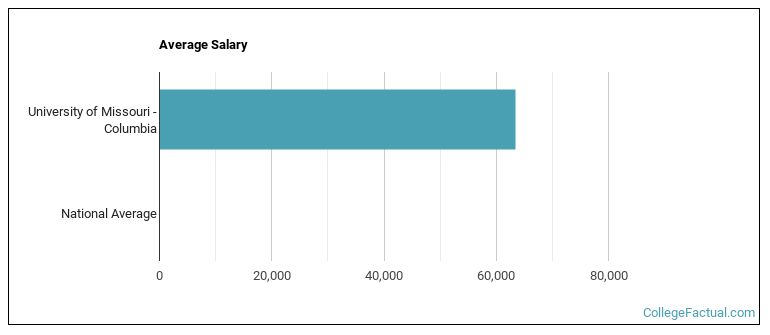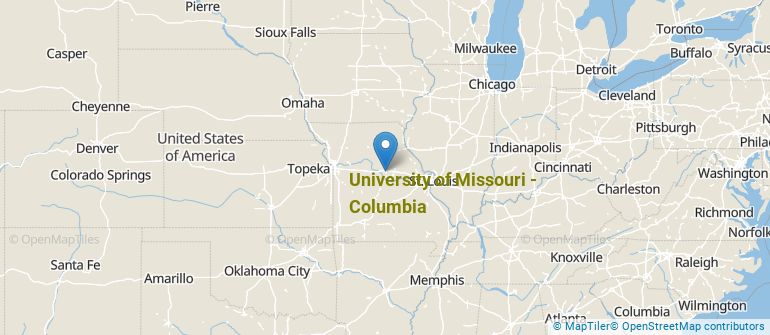 by our College Data Analytics Team
by our College Data Analytics Team
College Factual recognizes the best colleges and universities in its annual rankings. These rankings include categories for best overall colleges, best colleges for each major, best value schools, and much more.
University of Missouri - Columbia was awarded 123 badges in the 2025 rankings. The highest ranked major at the school is business, management & marketing.
Explore the best ranked schools for the programs you are most interested in.
Mizzou landed the #131 spot in College Factual's 2025 ranking of best overall colleges in the United States. The higher ed experts analyzed 2,152 colleges and universities across the nation to determine this ranking. This puts it in the top 10% of all schools in the nation.
Out of the 48 colleges in Missouri, Mizzou is ranked at #3.
See all of the rankings for University of Missouri - Columbia.
When it comes to admittance, University of Missouri - Columbia is somewhat selective. Its acceptance rate is 79%, which means you'll face some strong competition during the admissions process. Do what you can to make your application stand out.
About 9% of students accepted to Mizzou submitted their SAT scores. When looking at the 25th through the 75th percentile, SAT Evidence-Based Reading and Writing scores ranged between 580 and 670. Math scores were between 560 and 670.
Learn more about University of Missouri - Columbia admissions.
The student to faculty ratio at University of Missouri - Columbia is about average at 18 to 1. This ratio is often used to gauge how many students might be in an average class and how much time professors will have to spend with their students on an individual level. The national average for this metric is 15 to 1.
In addition to the student to faculty ratio, some people look at what percentage of faculty members are full-time as a sign of how much time professors will be able to spend with their students. This is because part-time teachers may not be be on campus as much as their full-time counterparts.
The full-time faculty percentage at University of Missouri - Columbia is 76%. This is higher than the national average of 47%.
The freshmen retention rate of 89% tells us that most first-year, full-time students like University of Missouri - Columbia enough to come back for another year. This is a fair bit higher than the national average of 68%. That's certainly something to check off in the good column about the school.
Students are considered to have graduated on time if they finish their studies within four years. At Mizzou the on-time graduation rate of first-time, full-time students is 50%. That is great when compared to the national average of 33.3%
Find out more about the retention and graduation rates at University of Missouri - Columbia.
During the 2017-2018 academic year, there were 23,383 undergraduates at Mizzou with 21,344 being full-time and 2,039 being part-time.
| $0-30 K | $30K-48K | $48-75 | $75-110K | $110K + |
|---|---|---|---|---|
| $15,519 | $15,601 | $16,988 | $20,921 | $24,594 |
The net price is calculated by adding tuition, room, board and other costs and subtracting financial aid.Note that the net price is typically less than the published for a school. For more information on the sticker price of Mizzou, see our tuition and fees and room and board pages.
Almost 66% of college students who graduated with the class of 2018 took out student loans, but that percentage varies from school to school. At Mizzou, approximately 41% of students took out student loans averaging $9,167 a year. That adds up to $36,668 over four years for those students.
The student loan default rate at Mizzou is 1.0%. This is significantly lower than the national default rate of 10.1%, which is a good sign that you'll be able to pay back your student loans.
Get more details about paying for University of Missouri - Columbia.

See which majors at University of Missouri - Columbia make the most money.
Get more details about the location of University of Missouri - Columbia.

Contact details for Mizzou are given below.
| Contact Details | |
|---|---|
| Address: | 105 Jesse Hall, Columbia, MO 65211 |
| Phone: | 573-882-2121 |
| Website: | https://missouri.edu/ |
| Facebook: | http://socialmedia.missouri.edu/ |
| Twitter: | https://twitter.com/Mizzou |
| Most Popular Majors | Bachelor’s Degrees | Average Salary of Graduates |
|---|---|---|
| General Business/Commerce | 717 | $55,999 |
| Journalism | 449 | $43,958 |
| Health Sciences & Services | 439 | $39,186 |
| Accounting | 428 | $65,057 |
| Computer Information Systems | 355 | $72,886 |
| Nursing | 347 | $72,300 |
| General Psychology | 297 | $33,794 |
| General Biology | 223 | $36,732 |
| Communication & Media Studies | 191 | $44,078 |
| Student Counseling | 189 | NA |
Online learning options are becoming more and more popular at American colleges and universities. Online classes are great for students who have busy schedules or for those who just want to study on their own time.
In 2022-2023, 17,019 students took at least one online class at University of Missouri - Columbia. This is a decrease from the 19,662 students who took online classes the previous year.
| Year | Took at Least One Online Class | Took All Classes Online |
|---|---|---|
| 2022-2023 | 17,019 | 4,088 |
| 2021-2022 | 19,662 | 4,501 |
| 2020-2021 | 27,138 | 6,763 |
| 2018-2019 | 9,322 | 2,915 |
Learn more about online learning at University of Missouri - Columbia.
If you’re considering University of Missouri - Columbia, here are some more schools you may be interested in knowing more about.
Curious on how these schools stack up against Mizzou? Pit them head to head with College Combat, our free interactive tool that lets you compare college on the features that matter most to you!
Footnotes
*The racial-ethnic minorities count is calculated by taking the total number of students and subtracting white students, international students, and students whose race/ethnicity was unknown. This number is then divided by the total number of students at the school to obtain the racial-ethnic minorities percentage.
References
More about our data sources and methodologies.